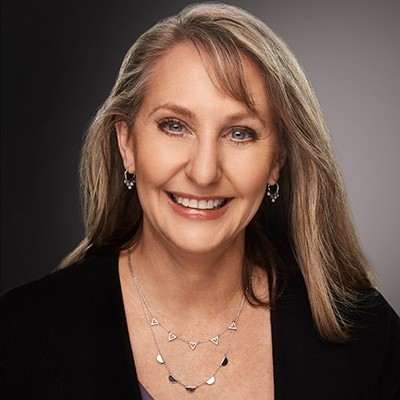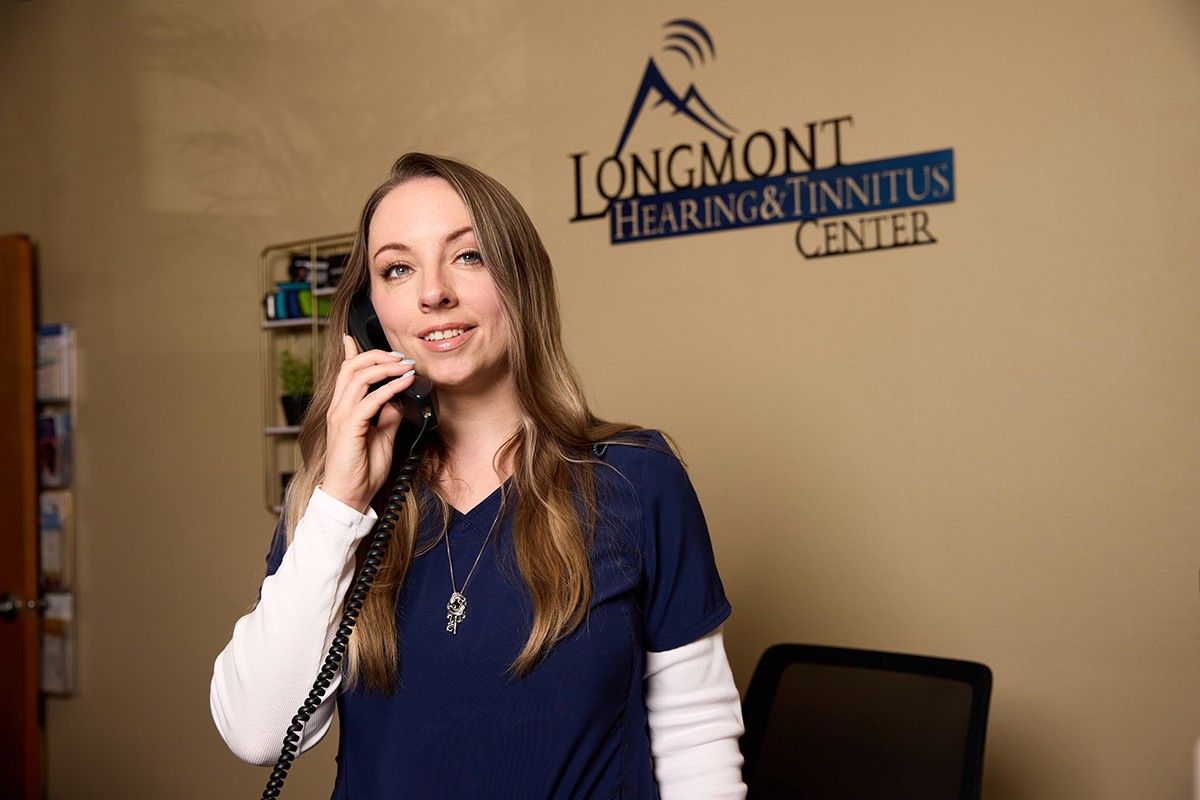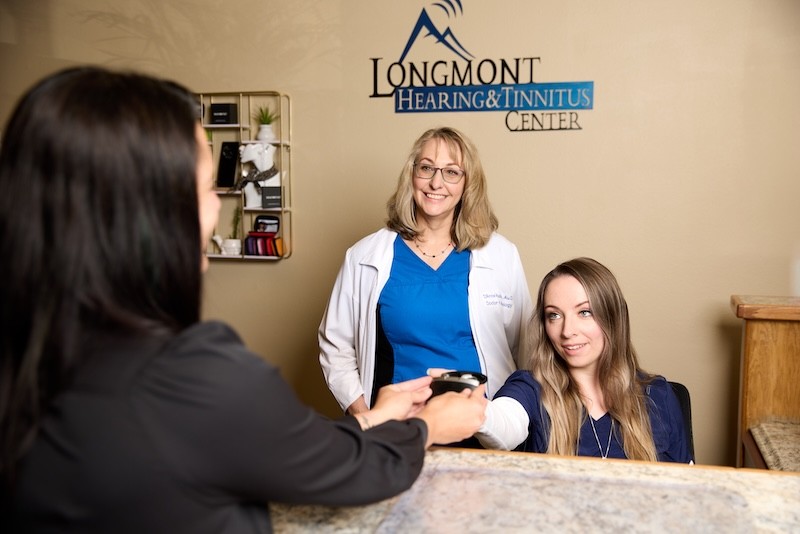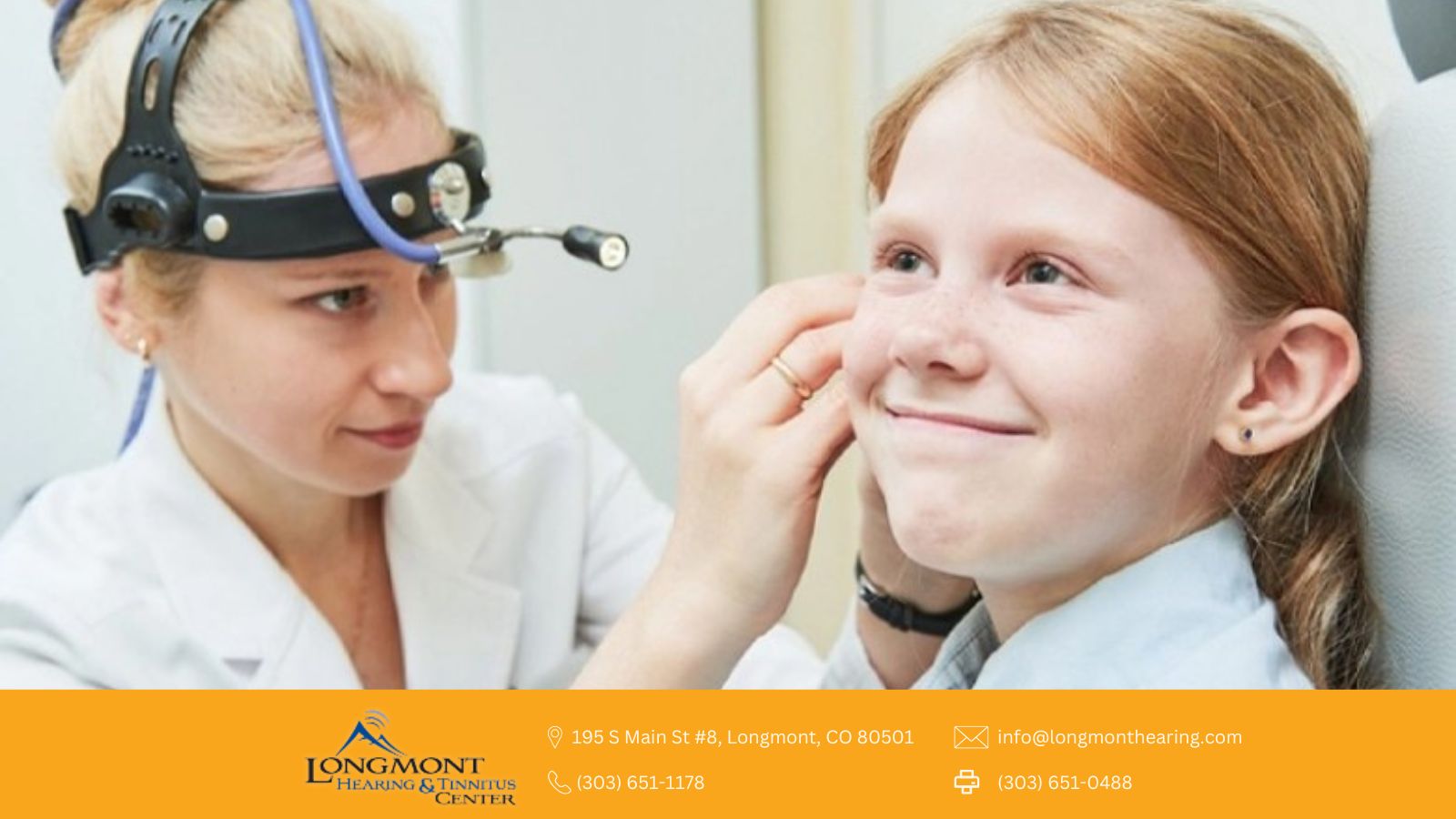
Audiology Services for Musicians
Safeguard Your Most Important Instrument
– Your Hearing
As a musician, your hearing is your most valuable asset. Longmont Hearing and Tinnitus Center offers specialized audiology services tailored to the unique needs of musicians, ensuring your hearing is protected without compromising the quality of your performance. Our solutions help you maintain your auditory health while continuing to capture and create music with clarity.
Why Musicians Need Specialized Audiology Care
Musicians are often exposed to high-volume environments that can lead to potential hearing damage over time. Without proper protection and care, this exposure can lead to tinnitus or noise-induced hearing loss. Our specialized services cater to your individual needs, enabling musicians to preserve their hearing and enhance their musical experience.

Our Solutions for Musicians Include

Custom Musicians' Earplugs

Custom Musicians' Earplugs

Custom Musicians' Earplugs

In-Ear Monitors (IEMs)

In-Ear Monitors (IEMs)

In-Ear Monitors (IEMs)

Tinnitus Management

Tinnitus Management

Tinnitus Management

Hearing Assessments

Hearing Assessments

Hearing Assessments
Why Choose Longmont for Your Auditory Needs?
Expertise in Music and Hearing
Our audiologists understand the specific demands of the music industry and are experienced in providing solutions that meet these unique requirements.
Customized Care
Your individual auditory needs and professional requirements will be met with personalized care that’s tailored to you
Commitment to Prevention
Our services aim to prevent hearing loss and ensure that you can perform and enjoy music throughout your career and beyond.
My name is Paul McDaniel.
I am, and have been a musician playing live rock and roll shows since 1966
and want to share how my career has been extended since working with
Dr. Rudden at Longmont Hearing and Tinnitus Center.
I have had Tinnitus since the really loud 1970's and by 2012 I had suffered
noticeable hearing loss. This is when I met Dr. Rudden and was
introduced to user controlled custom EQ'd hearing aids for real life
hearing. I also, based on her help and understanding of how important music is in my life, was fitted for custom molded In Ear Monitors for my music life.
The In Ear Monitors were a game changer in so many ways. I am able to control the volume of my monitor mix, eliminate feedback, and lower the stage volume for an overall better live performance experience. This reduced volume has reduced complaints from venues and is appreciated by sound engineers as well.
My rate of hearing loss is now on par with normal aging even while
still performing large and small venues. This has been an excellent "fix" to my
young man's musical addiction - even at the not so young age of 74.
I cannot thank Dr. Rudden and her staff for what she and they have done for my quality of life. Keep on rockin'.
Very sincerely,
Paul McDaniel

Photo courtesy of Angus Mohr, Colorado's Highland Rock and Roll Band
My name is Paul McDaniel.
I am, and have been a musician playing live rock and roll shows since 1966
and want to share how my career has been extended since working with
Dr. Rudden at Longmont Hearing and Tinnitus Center.
I have had Tinnitus since the really loud 1970's and by 2012 I had suffered
noticeable hearing loss. This is when I met Dr. Rudden and was
introduced to user controlled custom EQ'd hearing aids for real life
hearing. I also, based on her help and understanding of how important music is in my life, was fitted for custom molded In Ear Monitors for my music life.
The In Ear Monitors were a game changer in so many ways. I am able to control the volume of my monitor mix, eliminate feedback, and lower the stage volume for an overall better live performance experience. This reduced volume has reduced complaints from venues and is appreciated by sound engineers as well.
My rate of hearing loss is now on par with normal aging even while
still performing large and small venues. This has been an excellent "fix" to my
young man's musical addiction - even at the not so young age of 74.
I cannot thank Dr. Rudden and her staff for what she and they have done for my quality of life. Keep on rockin'.
Very sincerely,
Paul McDaniel

Photo courtesy of Angus Mohr, Colorado's Highland Rock and Roll Band
My name is Paul McDaniel.
I am, and have been a musician playing live rock and roll shows since 1966
and want to share how my career has been extended since working with
Dr. Rudden at Longmont Hearing and Tinnitus Center.
I have had Tinnitus since the really loud 1970's and by 2012 I had suffered
noticeable hearing loss. This is when I met Dr. Rudden and was
introduced to user controlled custom EQ'd hearing aids for real life
hearing. I also, based on her help and understanding of how important music is in my life, was fitted for custom molded In Ear Monitors for my music life.
The In Ear Monitors were a game changer in so many ways. I am able to control the volume of my monitor mix, eliminate feedback, and lower the stage volume for an overall better live performance experience. This reduced volume has reduced complaints from venues and is appreciated by sound engineers as well.
My rate of hearing loss is now on par with normal aging even while
still performing large and small venues. This has been an excellent "fix" to my
young man's musical addiction - even at the not so young age of 74.
I cannot thank Dr. Rudden and her staff for what she and they have done for my quality of life. Keep on rockin'.
Very sincerely,
Paul McDaniel

Photo courtesy of Angus Mohr, Colorado's Highland Rock and Roll Band
D’Anne Rudden is wonderful! Would recommend her services to anyone. Also, the staff was so lovely and were quick to get me in for an appointment!

Sophie S
2 weeks ago
Special thanks to Dr Demars- she’s fun and wonderful to work with while also being very knowledgeable and professional.

Leanne D
1 month ago
First time visit didn't know what to expect little nervous I was greeted with a warm smile and a greeting.

Gary S
2 months ago
We had an amazing experience with Longmont Hearing and Tinnitus Center! From booking our appointments only 10 days before he end of the year to them fitting my husband.

Diana C
2 weeks ago
Dr. Caney Demars was unlike any other doctor I've seen before, anywhere. She was interested in what I had to say, actually listened to me and showed genuine concern.

Rodger S
Lead Software Engineer
D’Anne Rudden is wonderful! Would recommend her services to anyone. Also, the staff was so lovely and were quick to get me in for an appointment!

Sophie S
2 weeks ago
Special thanks to Dr Demars- she’s fun and wonderful to work with while also being very knowledgeable and professional.

Leanne D
1 month ago
First time visit didn't know what to expect little nervous I was greeted with a warm smile and a greeting.

Gary S
2 months ago
We had an amazing experience with Longmont Hearing and Tinnitus Center! From booking our appointments only 10 days before he end of the year to them fitting my husband.

Diana C
2 weeks ago
Dr. Caney Demars was unlike any other doctor I've seen before, anywhere. She was interested in what I had to say, actually listened to me and showed genuine concern.

Rodger S
Lead Software Engineer
D’Anne Rudden is wonderful! Would recommend her services to anyone. Also, the staff was so lovely and were quick to get me in for an appointment!

Sophie S
2 weeks ago
Special thanks to Dr Demars- she’s fun and wonderful to work with while also being very knowledgeable and professional.

Leanne D
1 month ago
First time visit didn't know what to expect little nervous I was greeted with a warm smile and a greeting.

Gary S
2 months ago
We had an amazing experience with Longmont Hearing and Tinnitus Center! From booking our appointments only 10 days before he end of the year to them fitting my husband.

Diana C
2 weeks ago
Dr. Caney Demars was unlike any other doctor I've seen before, anywhere. She was interested in what I had to say, actually listened to me and showed genuine concern.

Rodger S
Lead Software Engineer
Take the Next Step in Protecting Your Hearing
Your music deserves to be heard, and your hearing deserves to be protected.
Contact us to schedule your appointment and take the first step towards a clearer tomorrow.

Take the Next Step in Protecting Your Hearing
Your music deserves to be heard, and your hearing deserves to be protected.
Contact us to schedule your appointment and take the first step towards a clearer tomorrow.

Take the Next Step in Protecting Your Hearing
Your music deserves to be heard, and your hearing deserves to be protected.
Contact us to schedule your appointment and take the first step towards a clearer tomorrow.

The Latest News in Hearing Healthcare

Spring Cleaning for Your Ears: How to Care for Your Hearing Aids Year-Round
Spring offers the perfect moment to dedicate time to your hearing aids.
Read More

How to Choose the Right Hearing Clinic: 5 Questions to Ask Before You Book
Discover how to choose the right hearing clinic with five essential questions to ensure quality hearing care.
Read More

Understanding Ear Wax Removal: A Comprehensive Guide
As an audiologist, I often meet patients who are curious, confused, or even a little worried about ear wax. Ear wax...
Read More
The Latest News in Hearing Healthcare

Spring Cleaning for Your Ears: How to Care for Your Hearing Aids Year-Round
Spring offers the perfect moment to dedicate time to your hearing aids.
Read More

How to Choose the Right Hearing Clinic: 5 Questions to Ask Before You Book
Discover how to choose the right hearing clinic with five essential questions to ensure quality hearing care.
Read More

Understanding Ear Wax Removal: A Comprehensive Guide
As an audiologist, I often meet patients who are curious, confused, or even a little worried about ear wax. Ear wax...
Read More
The Latest News in Hearing Healthcare

Spring Cleaning for Your Ears: How to Care for Your Hearing Aids Year-Round
Spring offers the perfect moment to dedicate time to your hearing aids.
Read More

How to Choose the Right Hearing Clinic: 5 Questions to Ask Before You Book
Discover how to choose the right hearing clinic with five essential questions to ensure quality hearing care.
Read More

Understanding Ear Wax Removal: A Comprehensive Guide
As an audiologist, I often meet patients who are curious, confused, or even a little worried about ear wax. Ear wax...
Read More

